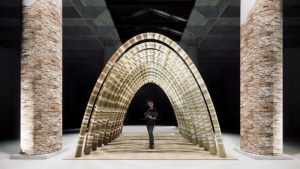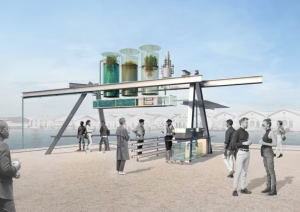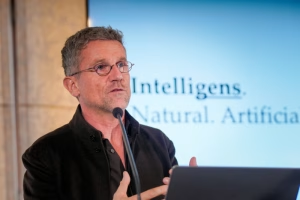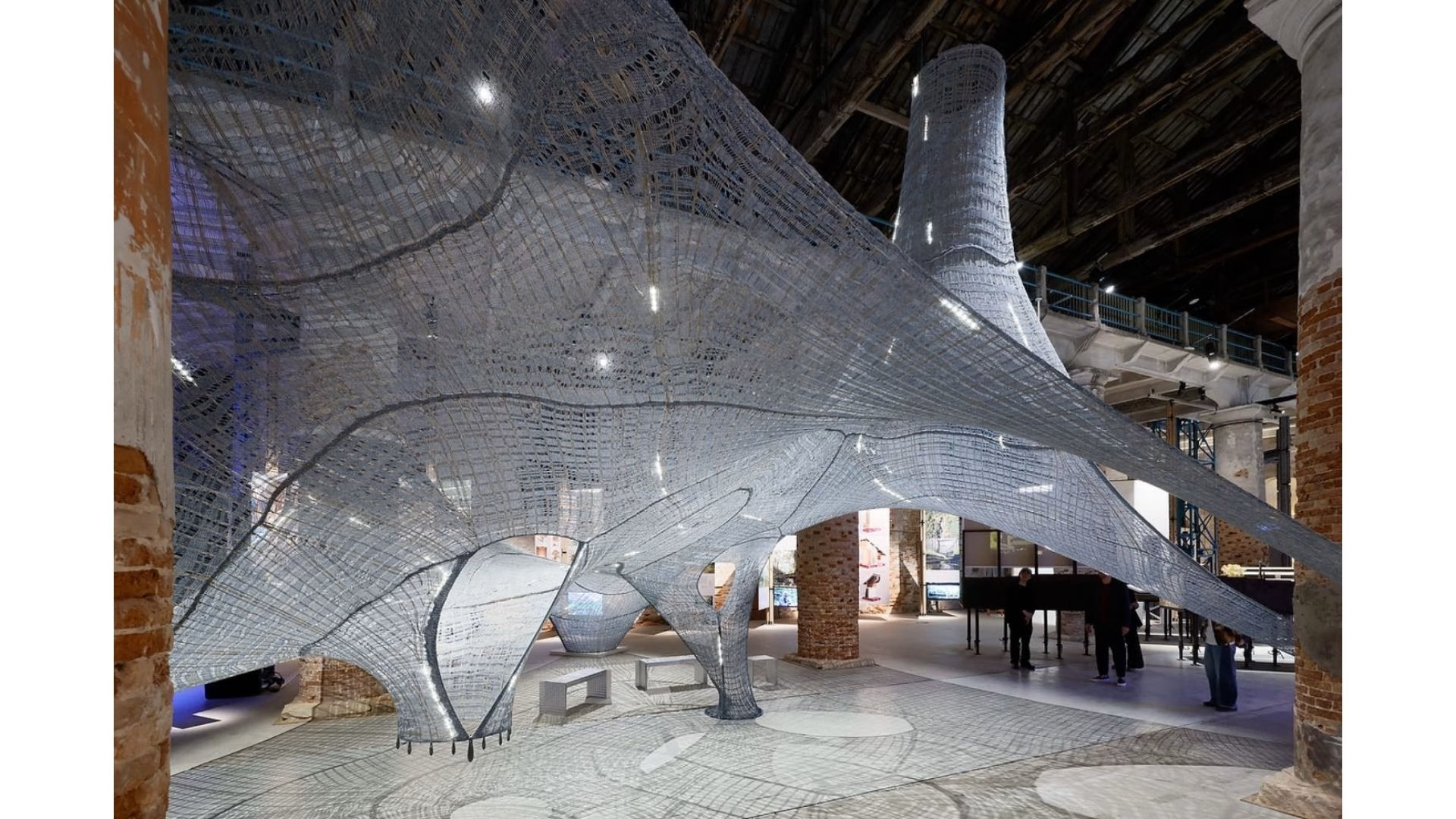Architecture’s Intelligence Against a Burning World: The 19th Venice Architecture Biennale on the Horizon
“To face a burning world, architecture must harness all the intelligence around us.” This bold and provocative statement by curator Carlo Ratti sets the intellectual compass for the 19th Venice Architecture Biennale, which opened its doors in May 2025. Titled Intelligens. Natural. Artificial. Collective., this major event invites us to rethink architecture’s role and potential in addressing the existential crises facing our planet. Moving beyond mere construction, the Biennale places a multifaceted understanding of intelligence—spanning the wisdom of natural ecosystems, the computational power of artificial intelligence, the collective knowledge of communities, and individual creativity—at the heart of architectural practice.
Photo: Andrea Aveezzù
Led by Carlo Ratti, director of MIT’s Senseable City Lab and known for his interdisciplinary, innovative approaches, this Biennale positions architecture as a focal point for responding to ecological crises. Drawing from fields as diverse as biology and data science, Ratti seeks “smart solutions” that challenge the traditional image of the architect as a solitary genius. Instead, he embraces a distributed authorship model akin to collective scientific research. With over 750 participants, the Biennale sparks a profound inquiry into how we build in a changing world. This year’s Ideas Hub Open Call reflects this pluralistic vision, bringing together voices from Pritzker Prize-winning masters to emerging young talents. Many of the exhibited projects echo the concepts of scientist Donna Haraway, focusing on kinship, ecology, and collective survival, reminding us that architecture not only creates physical spaces but also shapes our existential relationships and our bond with the planet.

Boonserm Premthada: ‘The Elephant Chapel,’ 2025
At the Heart of Intelligens: Adaptation and Multilayered Intelligence
At the core of the Intelligens theme lies the concept of adaptation. Architecture must evolve alongside shifting climate conditions and transforming social structures. While previous Biennales often emphasized sustainability or impact reduction, Ratti’s exhibition champions a more dynamic paradigm: flexibility and adaptive capacity. This approach demands interdisciplinary and cross-cultural collaboration, addressing not only today’s needs but also those of future generations and diverse geographies.
This vision is reflected in the exhibition layout at the Arsenale’s Corderie, where visitors navigate modular, fractal spaces organized around natural, artificial, and collective intelligence. These spaces foster a dialogue between small-scale experiences and global visions. A speculative section, themed around “the outside,” questions whether space exploration offers an escape from Earth’s crises. Ratti’s answer is clear: No, it’s not an escape, but space research can provide insights and technologies to improve life here.
Collaborations between climate scientists and architects take center stage. For instance, projects like The Other Side of the Hill, which explores microbial life as a model for post-growth societies, highlight efforts to learn from nature’s inherent intelligence. Thai architect Boonserm Premthada’s Elephant Chapel project is a tangible example, showcasing elephant dung transformed into a building material, blending local wisdom with the principles of circular design.

Aaron Betsky, Diller Scofidio + Renfro, Natural Systems Utilities, Sodai: ‘Canal Cafe,’ 2025
Venice: The Biennale as a Living Laboratory
Venice transcends its role as a historic backdrop, becoming what Ratti calls a “living laboratory.” As a Hydropolis, or water city, Venice represents far more than a mere setting—it’s an active participant in the Biennale’s sustainability narrative. The revamped Central Pavilion and installations scattered throughout the city integrate the exhibition with Venice’s urban and ecological fabric. Interventions like the Canal Café, which turns lagoon water into espresso, or Margherissima, a speculative urban prototype for Marghera’s contaminated soils, connect the Biennale’s grand themes with the tangible realities of a city grappling with climate change.
National Pavilions: Local Intelligence for Global Crises
Alongside the main exhibition, 66 National Pavilions offer unique responses to global crises, serving as guides for the future of our living spaces. Themes range from restorative geologies and AI-supported heritage preservation to coastal resilience and the ancient wisdom of Indigenous peoples.
-
The British Pavilion, themed British Restorative Geology, confronts the legacies of colonial resource extraction. Exploring deep connections between the Great Rift Valley and Britain’s industrial past, designers like Owen Hopkins, Kathryn Yusoff, Kabage Karanja, and Stella Mutegi propose a restorative methodology.
-
The Armenian Pavilion, under the title Micro-Architecture via AI: Creating New Memories with Ancient Monuments, examines the intersection of artificial intelligence and cultural heritage. Curated by Marianna Karapetyan, it showcases collaborative projects reimagining Armenia’s ancient monuments in contemporary contexts.
-
The host Italian Pavilion, curated by Guendalina Salimei and titled Termin Aquæ (or Italy and the Intelligence of the Sea), focuses on the intelligence of the sea. Functioning as a maritime laboratory, it explores how architecture can adapt to Italy’s changing coastline, delving into new relationships between land and water in the Mediterranean through speculative projects.
-
The Australian Pavilion, themed Home, investigates the layered meanings of housing through the lens of Indigenous knowledge systems, integrating people, land, and culture. Through storytelling, spatial installations, and ceremonies, it amplifies First Nations’ voices, presenting natural intelligence as both ancient and living.
In short, the 19th Venice Architecture Biennale is poised to be a platform that goes beyond aesthetic and formal pursuits, posing critical questions about our planet’s future and seeking answers through collective intelligence. Carlo Ratti’s vision redefines architecture not just as an outcome but as a process, a research endeavor, and a space for dialogue to address complex challenges. We can’t wait to see it unfold!
Exhibition Details
La Biennale di Venezia
Group Exhibition: Intelligens. Natural. Artificial. Collective.
Exhibition Dates: May 10 – November 23, 2025
labiennale.org
Giardini della Biennale, 30122 Venezia VE, Italy, Click for map
Arsenale di Venezia, 30122 Venezia VE, Italy, Click for map
















